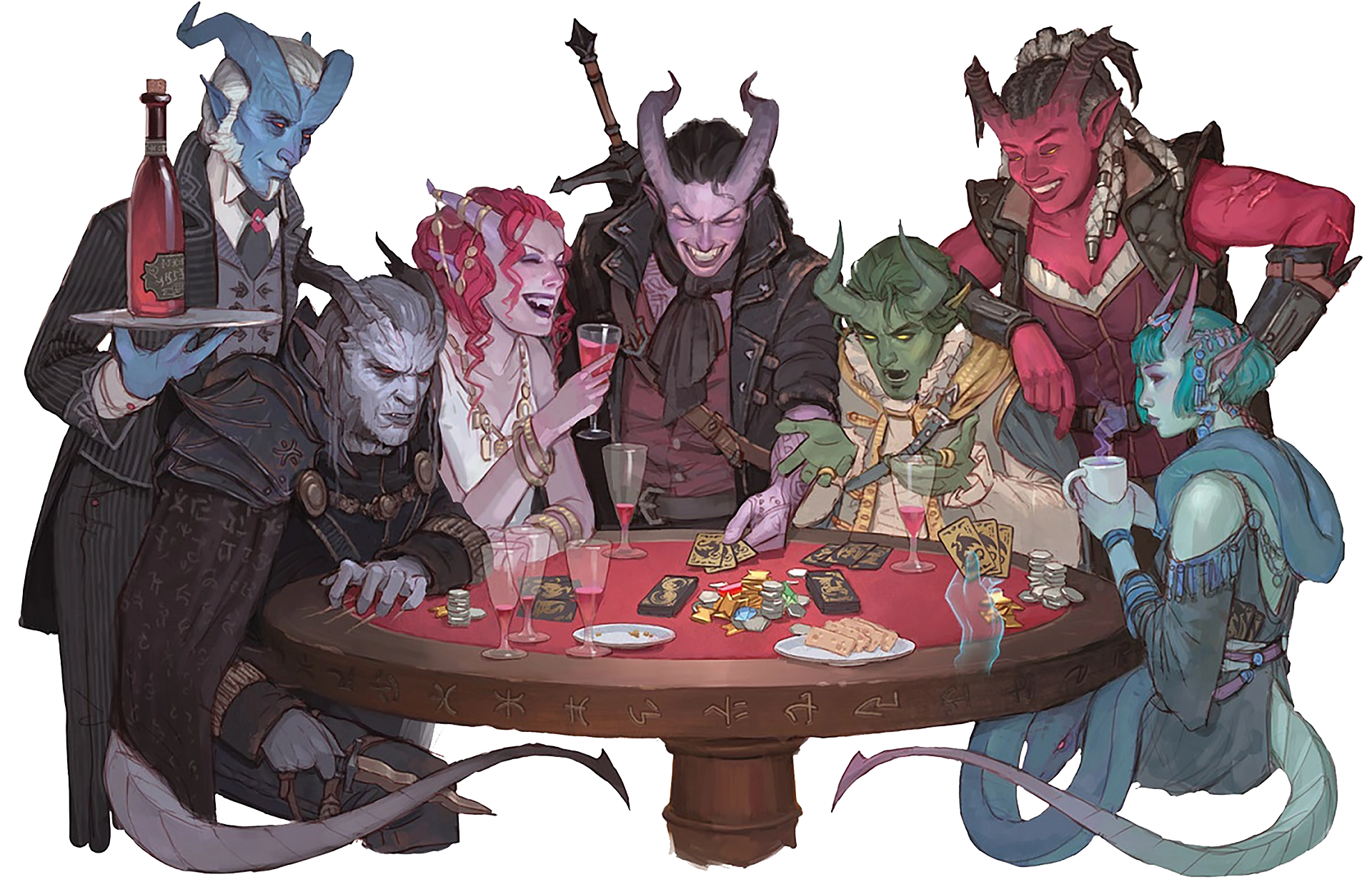Tieflings, Surpassing one's legacy
Among the many planetouched beings of Aurora, none are as controversial or misunderstood as tieflings. These beings, infused with the essence of fiends such as demons, devils, and other infernal entities, trace their origins back to unions between mortals and extraplanar creatures. Despite their ominous heritage, tieflings are not bound by fate to evil, though societal prejudice often drives them toward isolation, defiance, and self-reliance.
Tiefling ancestry manifests in subtle and sometimes dramatic ways. They may possess infernal traits such as skin tinged with ash, red, or deep ebony hues, glowing eyes, or even small horns or tails. Their physical forms often exude an unnatural presence, causing unease in others. This fiendish influence can manifest as supernatural abilities, including darkvision and elemental resistances, such as fire immunity for those tied to the blood of Asmodeus. Some tieflings display bizarre traits—casting no shadow, lacking reflections, or emanating an odor of sulfur or ash. These characteristics, combined with their reputation for cunning and ambition, have fueled the stereotype of tieflings as deceitful or dangerous beings.
Despite such prejudices, tieflings display a remarkable resilience and independence. Most are solitary by nature, driven by a fierce determination to forge their own paths in life. Their adaptability makes them adept in any pursuit they choose, from scholarly research to martial mastery. Unlike aasimar, who often band together due to a shared celestial connection, tieflings rarely feel kinship with others of their kind. The sheer diversity of their fiendish lineages, combined with their individualistic tendencies, prevents the formation of unified communities or kingdoms.
Social rejection is a formative aspect of many tieflings' lives. They often endure suspicion or outright hostility due to their infernal appearances, even when they strive to live virtuous lives. In response, some tieflings lean into societal expectations, adopting criminal lifestyles where their innate charm and deception skills give them an edge. Others see society’s disdain as a challenge to prove their worth, striving to embody virtues that defy their dark ancestry. These individuals may become inspiring leaders, dedicated protectors, or cunning strategists in service of noble causes.
Tieflings' supernatural origins grant them unique abilities tied to their fiendish heritage. Many possess an innate understanding of Infernal, often without formal training. Their resistance to elemental forces such as cold, fire, or electricity depends on their specific lineage. Some exhibit eerie talents, such as withering plant life with a touch or exuding a sense of dread that unsettles animals and people alike. These traits make them both formidable allies and fearsome adversaries.
The origins of tieflings often trace back to humans who mingled with fiends either by choice or through dark magic. The offspring of such unions were cambions or half-fiends, who in turn produced tiefling descendants when paired with mortal partners. In time, even the faintest trace of fiendish ancestry can unexpectedly reemerge, creating new tieflings in later generations. This unpredictability has led to tieflings being both feared and misunderstood by mortal societies, as even seemingly pure bloodlines may suddenly give rise to infernal offspring.
Given their rarity, many tieflings grow up without ever meeting another of their kind. They are often raised by human parents, abandoned due to fear or shame, and left in the care of orphanages, monasteries, or religious institutions. Despite their solitary existence, a few fortunate tieflings thrive in merchant families, where their mobility and wealth shield them from societal scorn.
While many tieflings struggle with their fiendish heritage, others come to admire the dark powers to which they are connected. Their interactions with devils and demons can range from hostile enmity to cautious reverence. Some are seen by fiends as enemies due to their mortal defiance, while others become pawns in infernal schemes, tempted by offers of power in exchange for loyalty.
In the grand tapestry of Aurora’s history, tieflings remain enigmatic figures—symbols of both infernal legacy and mortal choice. They embody the tension between destiny and self-determination, proving that even those touched by darkness may strive for the light. Their complex nature ensures that they will always be individuals defined not solely by their origins, but by the choices they make and the paths they forge in defiance or acceptance of their heritage.
Geographic Distribution



Comments